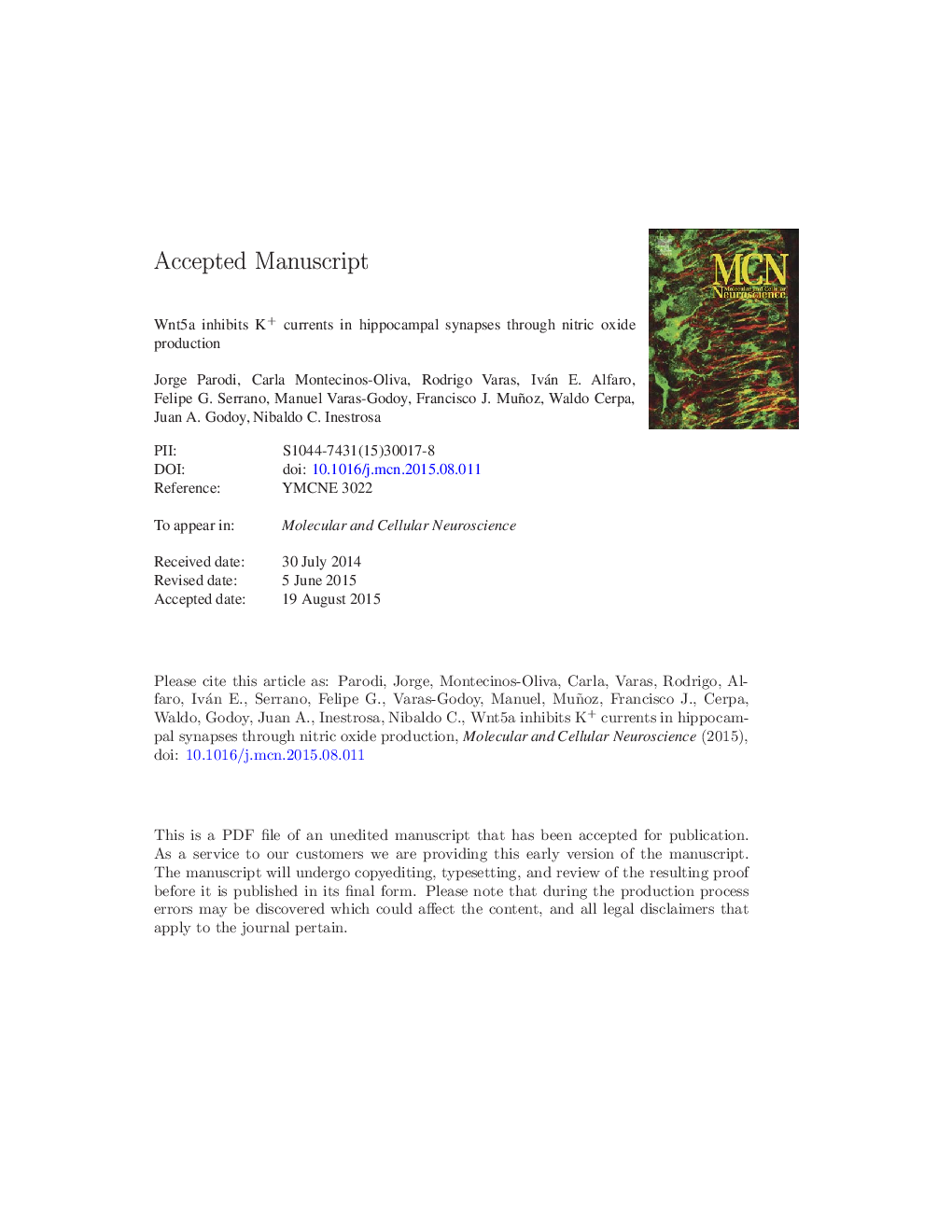| Article ID | Journal | Published Year | Pages | File Type |
|---|---|---|---|---|
| 8478546 | Molecular and Cellular Neuroscience | 2015 | 39 Pages |
Abstract
Hippocampal synapses play a key role in memory and learning processes by inducing long-term potentiation and depression. Wnt signaling is essential in the development and maintenance of synapses via several mechanisms. We have previously found that Wnt5a induces the production of nitric oxide (NO), which modulates NMDA receptor expression in the postsynaptic regions of hippocampal neurons. Here, we report that Wnt5a selectively inhibits a voltage-gated K+ current (Kv current) and increases synaptic activity in hippocampal slices. Further supporting a specific role for Wnt5a, the soluble Frizzled receptor protein (sFRP-2; a functional Wnt antagonist) fully inhibits the effects of Wnt5a. We additionally show that these responses to Wnt5a are mediated by activation of a ROR2 receptor and increased NO production because they are suppressed by the shRNA-mediated knockdown of ROR2 and by 7-nitroindazole, a specific inhibitor of neuronal NOS. Together, our results show that Wnt5a increases NO production by acting on ROR2 receptors, which in turn inhibit Kv currents. These results reveal a novel mechanism by which Wnt5a may regulate the excitability of hippocampal neurons.
Keywords
nNOSN-methyl d-aspartic acidVDCCpost-synaptic density 95c-Jun. N-terminal kinaseTRPCWNT5A7-NIIPSPPTXfEPSPPKCRor2PSD-95NMDACaMKIIeGFPJnkDVL1-β-d-arabinofuranosylcytosine7-nitroindazoleK+ currentl-NAMEl-NG-Nitroarginine methyl esterMOIγ-aminobutyric aciddisheveledTetraethylammoniumlong term potentiationLTPAraCstandard error of the meanCNSDIVdays in vitroneuronal nitric oxide synthaseCMVcytomegaloviruscentral nervous systemdentate gyrusSEMHippocampal neuronsNitric oxideinhibitory postsynaptic potentialsfield excitatory postsynaptic potentialsenhanced green fluorescent proteinProtein kinase CPicrotoxinTEAmultiplicity of infectionVoltage-dependent calcium channelsTransient receptor potential cation channelGABA
Related Topics
Life Sciences
Biochemistry, Genetics and Molecular Biology
Cell Biology
Authors
Jorge Parodi, Carla Montecinos-Oliva, Rodrigo Varas, Iván E. Alfaro, Felipe G. Serrano, Manuel Varas-Godoy, Francisco J. Muñoz, Waldo Cerpa, Juan A. Godoy, Nibaldo C. Inestrosa,
